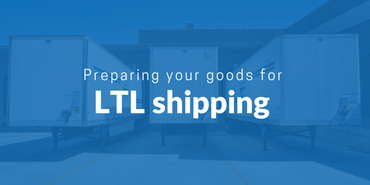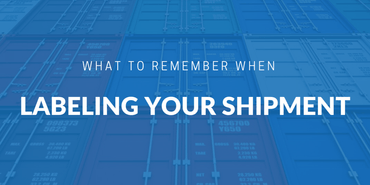
40-foot High Cube Container - Dimensions, Specs and Weight



The 40-foot high cube container is a popular choice in international shipping, especially for ocean freight. Alongside the 20-foot and standard 40-foot containers, it plays a vital role in global logistics thanks to its increased internal height and versatile capacity.
External and Internal Dimensions
The dimensions of a 40ft high cube container are typically measured in both feet and meters to support international standards. Below is a detailed breakdown:
| Measurement Type | Dimensions (Feet) | Dimensions (Meters) |
|---|---|---|
| External Length | 40' 0" | 12.19 m |
| External Width | 8' 0" | 2.44 m |
| External Height | 9' 6" | 2.89 m |
| Internal Length | 39' 6" | 12.025 m |
| Internal Width | 7' 9" | 2.352 m |
| Internal Height | 8' 10" | 2.585 m |
| Usable Volume | 2,694 ft³ | 76 m³ |
The added height (compared to a standard 40ft container) provides about 10% more cubic capacity, which makes it ideal for shipping taller or more voluminous cargo.
Pallet Capacity
The number of pallets a high cube container can hold depends on pallet type and loading configuration.
| Pallet Type | Dimensions (approx.) | Max Pallets (Floor Loaded) | Notes |
|---|---|---|---|
| Euro Pallet | 1.2 m x 0.8 m | Up to 25 | Load must not overhang. 1 row lengthwise, 1 widthwise. |
| Standard US Pallet | 40" x 48" (1.016 m x 1.219 m) | Up to 21 | Ensure items fit within base without overhang. |
Efficient loading often requires strategic stacking and use of dunnage materials to stabilize cargo and make full use of vertical space.
Maximum Load Capacity of a 40-foot high cube container
The maximum payload of a 40-foot high cube container depends on various factors, but general guidelines include:
- Tare weight: ~4,150 kg
- Max gross weight: ~30,480 kg (approx. 67,200 lbs)
- Typical maximum cargo weight: ~26,300 kg (29 tons), depending on route and shipping line restrictions
Note: Always confirm weight limits with your freight forwarder or carrier, as road and port regulations can affect allowable limits.
Common Uses for 40-Foot High Cube Shipping Containers
High cube containers are preferred in industries that require space optimization or transport of tall or lightweight bulk items. Common cargo types include:
- Furniture and home appliances
- Industrial machinery or oversized equipment
- Bulk textiles or garments
- Lightweight, voluminous goods
- Fragile cargo that requires tiered stacking
Why Choose a 40ft High Cube Container?
- More internal space for taller cargo or higher stacks
- Efficient for bulk shipments, reducing the number of containers needed
- Widely accepted across major ports and shipping lines
- Suitable for FCL and LCL freight, depending on volume
Need Help Planning Your Shipment?
Use our cubic meter calculator to estimate how much space you need, and find out whether a high cube container is right for you.
Or try our iContainers platform to compare prices and book FCL or LCL shipping easily.
Frequently Asked Questions about 40ft High Cube Shipping Container
A 40-foot high cube container offers an additional foot of vertical space compared to a standard 40-foot container. While standard units measure 8 feet 6 inches in height, high cube containers stand at 9 feet 6 inches. This added height increases internal volume by approximately 10%, making it suitable for taller or more voluminous cargo without altering the container’s length or width.
A 40 ft high cube container has a total internal volume of about 76.4 cubic meters (2,694 cubic feet). Depending on the cargo type and packaging method, it can hold:
- 25–27 Euro pallets or 20–22 standard pallets
- Up to 60,000 lbs (27,000 kg), subject to local transport regulations
- Bulky or irregularly shaped items that benefit from vertical clearance
These containers are ideal for goods that require extra height or efficient stacking, such as:
- Furniture and home appliances
- Industrial equipment and machinery
- Palletized, stackable products
- Lightweight bulk items (e.g., textiles, paper)
- Vehicles or oversized items
Always ensure proper weight distribution to comply with road transport limitations.
The extra foot of space allows you to:
- Stack items higher, reducing unused space
- Fit taller goods without modifying them
- Consolidate more cargo into a single shipment
Proper securing and balance are essential to prevent cargo shifting during transit.
To use the space efficiently:
- Use stackable pallets to take advantage of vertical space
- Place heavier items on the bottom, lighter ones on top
- Ensure even weight distribution to prevent imbalance
- Fill gaps with dunnage (airbags, foam, cardboard) for added stability
To ensure safe and efficient shipping:
- Shrink-wrap and strap pallets securely
- Use moisture-resistant materials for long routes
- Avoid oversized crates that reduce available space
- Apply tiered stacking techniques for loose cargo
In some cases, high cube containers may incur slightly higher shipping costs due to their volume. However, if utilized efficiently, the extra space can reduce the need for additional containers, making it cost-effective per unit shipped.
- FCL (Full Container Load): A flat rate applies for exclusive use—ideal for large shipments.
- LCL (Less than Container Load): Pricing is based on space used—better for smaller volumes but higher cost per cubic meter.
Choose based on cargo size, timing, and cost efficiency.
Yes, some transport routes may have height limitations, especially on road or rail. Always verify local regulations and port compatibility to avoid rerouting or added costs.
For optimal security during transit:
- Use bracing and blocking to fix items in place
- Install cargo straps or load bars
- Fill gaps with dunnage bags
- Monitor weight balance to prevent tilting
Yes. During peak seasons like holidays or Chinese New Year, demand surges can drive up rates. Booking early and maximizing container capacity can help manage costs.
Industries that benefit from increased capacity include:
- Retail and e-commerce (bulk goods)
- Automotive and industrial sectors (heavy or tall parts)
- Construction (building materials, insulation)
- Textiles (rolls of fabric or garments)
Only if it's a refrigerated version (reefer). A 40-foot high cube reefer container includes a cooling unit to maintain temperature control, making it suitable for shipping pharmaceuticals, perishables, or flowers.
References
- U.S. Department of Transportation – Freight Facts and Figures
- International Trade Administration – Export Shipping Basics
- Packaging World – Optimizing Pallet Configuration
- Intermodal Association of North America (IANA) – Equipment & Container Specs
- Federal Maritime Commission – Shipping Guidance
- OSHA – Loading and Securing Cargo Safety Guidelines
- American National Standards Institute (ANSI) – Pallet Standards
Related Articles


